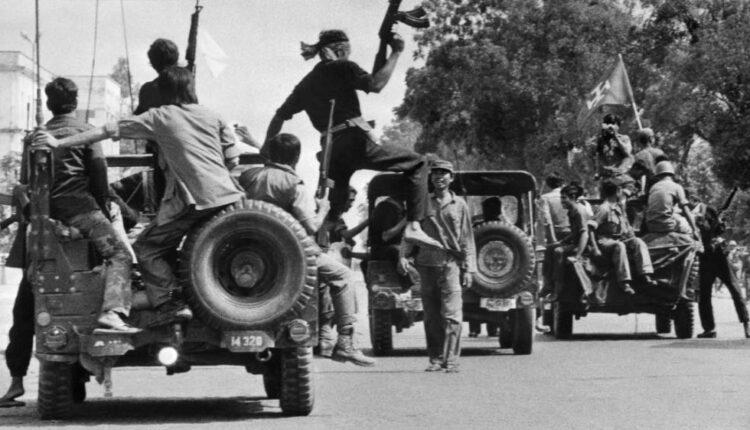Story highlights
- Phnom Penh, the Cambodian capital, fell to the genocidal Khmer Rouge 40 years ago today
- At least 1.7 million people were killed in the subsequent four years, before the regime was driven out
- Decades on, the country is still struggling to gain justice for victims and heal from the genocide
(CNN)On the stage of a TV studio in Phnom Penh, Cambodian-American Ly Sivhong is telling an engrossed audience a tragic, but familiar, story.
On April 17, 1975 — 40 years ago today — life as Ly knew it was shattered when her hometown, the Cambodian capital of Phnom Penh, fell to the genocidal Khmer Rouge regime of the Communist Party of Kampuchea.
Ly, then 13, was separated from her mother and two of her sisters who, along with virtually the entire population of Phnom Penh — about two million people — were sent on a forced march into the countryside to work.
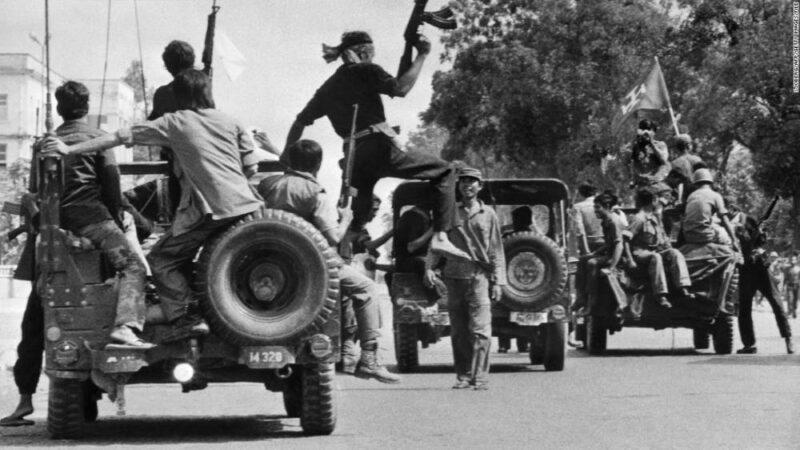
Khmer Rouge forces drive through Phnom Penh on 17 April, 1975.Ly never saw them again, nor learned what happened to them. But about 20,000 people died from execution, starvation or exhaustion during this exodus at gunpoint, according to war crimes prosecutors; the others were subjected to slave labor in rural camps once they reached their destination, where many met similar fates.The urban evacuation marked the first phase in the Khmer Rouge’s revolutionary program of social engineering, intended to establish a new order — free of money, family ties, religion, education, property and foreign influence.Read MoreAimed at creating an agrarian utopia, it would instead prove one of the worst genocides of the modern era, resulting in the deaths of at least 1.7 million Cambodians — about a quarter of the country’s population — over the next four years.READ: Timeline of the Khmer Rouge and its aftermath
Family lost
Ly remained in the capital with her father and four other siblings, three of whom would succumb to starvation and disease in the following years, before her father was shot to death before her eyes in 1979. His killing prompted Ly to leave her sole remaining family member, youngest sister Bo, in the care of a local couple. She set out on her own, making her way to a refugee camp and eventually to the United States.

Ly Sivhong beside her long-lost sister, Bo.For more than 30 years she has wondered what happened to her baby sister. “I think she was the only family member to survive,” she says, with tears in her eyes.As she finishes her story, the producers usher a woman on the stage. It’s Bo. Ly embraces her sister and both women sob.”I missed you so much,” Ly says.”I’ve always searched for you,” Bo tells her.
Land of orphans
Since production began five years ago, the television show, “It’s Not A Dream,” has reunited members of 54 Cambodian families shattered by the genocide. More than 1,500 have sought its help.The series is just one example of the ways in which Cambodia’s traumatized society is beginning to undertake the fraught, painful business of reckoning with their history.
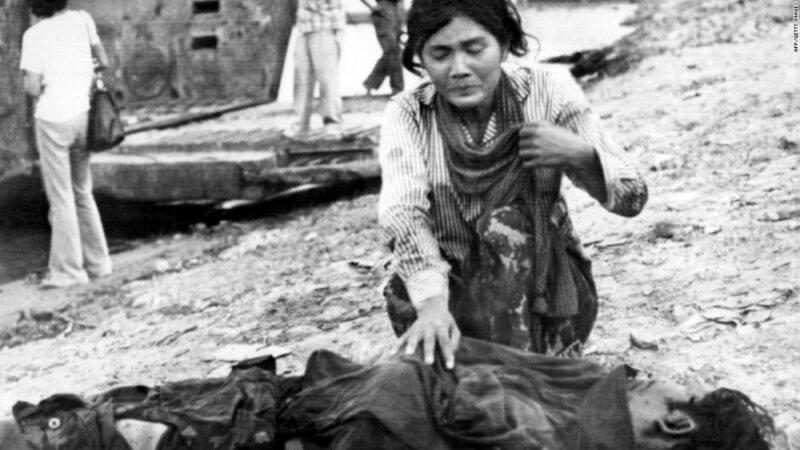
A woman cries beside a dead body in Phnom Penh after fall of the city on 17 April, 1975.”The scars of the Khmer Rouge are very deep and physical and present in modern Cambodia,” said Theary Seng, a human rights lawyer whose parents were killed by the regime, and who moved to the U.S. as a refugee before returning to her homeland as an adult.She described the country as a “land of orphans.” For decades after the Khmer Rouge were driven from Phnom Penh by Soviet-backed Vietnamese forces in January 1979, the regime’s crimes were seldom spoken about, let alone attempts made to seek redress for victims.In large part, this was because people remained scared, say experts.
Fear remains
Far from being snuffed out by the Vietnamese invasion, the Khmer Rouge existed for another two decades. After fleeing the capital in 1979, Khmer Rouge leader Pol Pot and his supporters established a stronghold in the west.

Pol Pot, former leader of the Khmer Rouge.They continued as an insurgent guerrilla force and became part of a government-in-exile that, until 1990, was recognized by the U.N. as the country’s only legitimate representative.”In many villages, people have been living side by side with the executioners for decades,” said Krisna Uk, executive director of the Center for Khmer Studies.Craig Etcheson, a Cambodia expert at the School for Conflict Analysis and Resolution at George Mason University, said that “for many years, there was a virtual taboo on even speaking of the Khmer Rouge, as if the very words were … a malevolent spirit lurking in the corner of every room.”
How to heal?
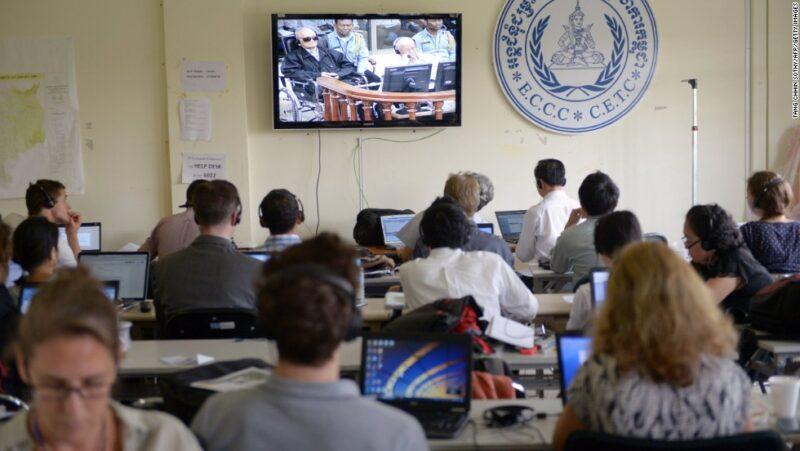
Photos: Cambodia's bloody pastCambodia's bloody past – Cambodian and international journalists watch a live video feed showing the verdicts in the trial of former Khmer Rouge leader “Brother Number Two,” Nuon Chea, and former Khmer Rouge head of state Khieu Samphan, August 7, 2014.Hide Caption 1 of 16
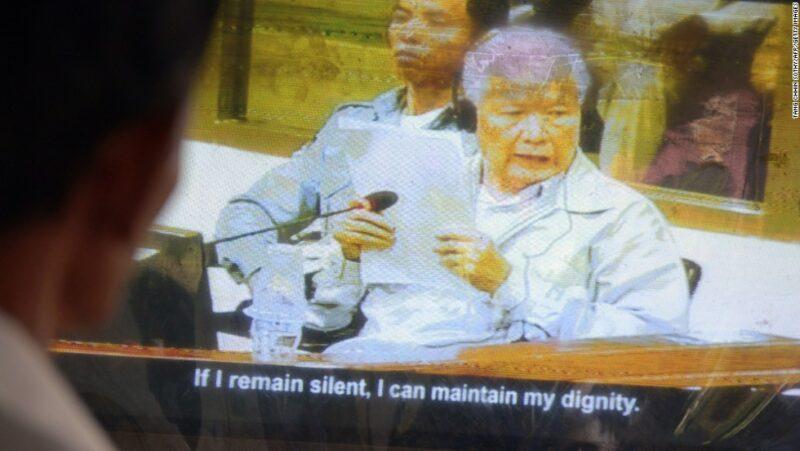
Photos: Cambodia's bloody pastCambodia's bloody past – A Cambodian man Khieu Samphan on a television during the trial at the Extraordinary Chamber in the Courts of Cambodia (ECCC) in Phnom Penh on August 7. He and Nuon Chea were found guilty of crimes against humanity and sentenced to life in prison.Hide Caption 2 of 16
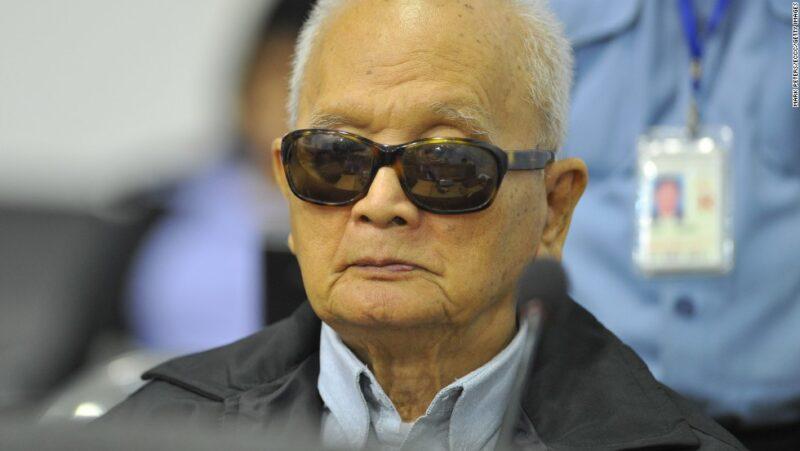
Photos: Cambodia's bloody pastCambodia's bloody past – Known as Brother Number Two, Nuon Chea was considered Khmer Rouge leader Pol Pot’s right hand man. This is an image from court in 2011.
Hide Caption 3 of 16
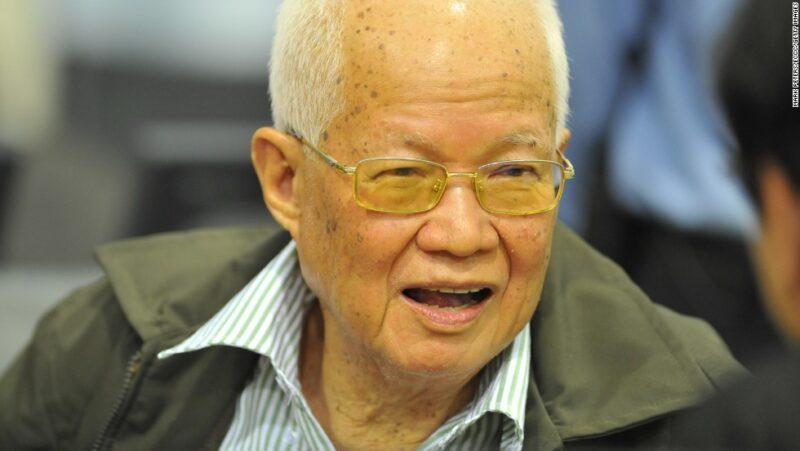
Photos: Cambodia's bloody pastCambodia's bloody past – As the former head of state for the Khmer Rouge, Khieu Samphan occupied a number of key roles as the government tortured, starved and killed its people.Hide Caption 4 of 16
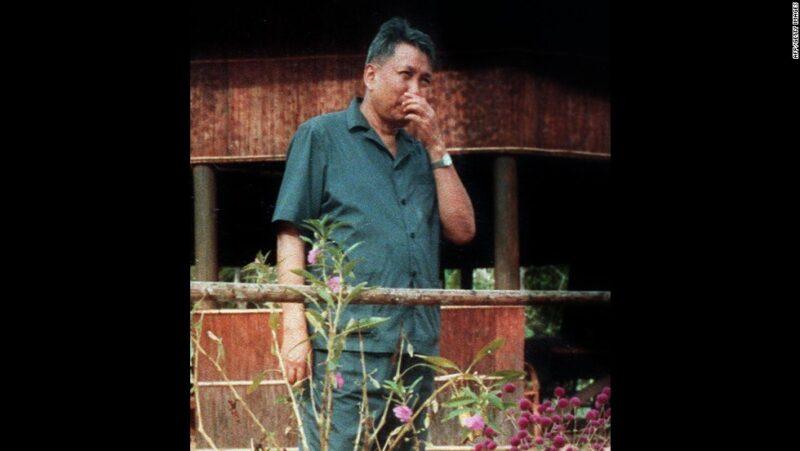
Photos: Cambodia's bloody pastCambodia's bloody past – This undated photo, which may have been taken in 1989, shows Pol Pot, the former leader of the Khmer Rouge. He was under house arrest when he died in 1998 and never faced charges for the slaughter under his reign.Hide Caption 5 of 16
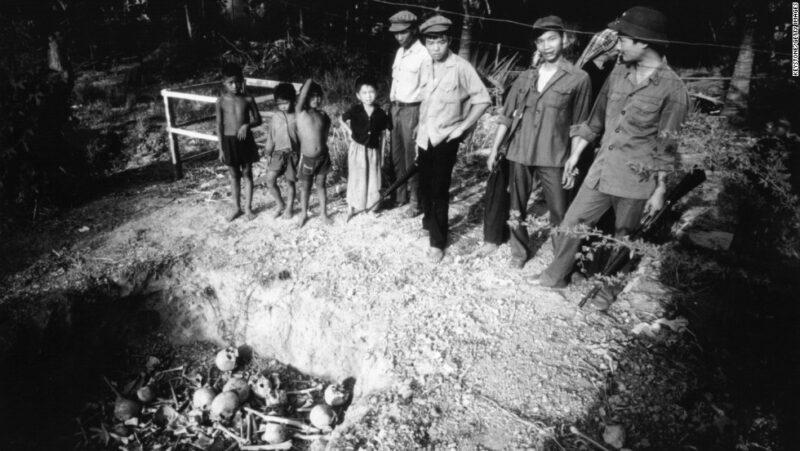
Photos: Cambodia's bloody pastCambodia's bloody past – At least 1.7 million people were killed under the Khmer Rouge’s brutal regime, which controlled Cambodia from 1975 to 1979. This photo shows open mass graves in 1979.Hide Caption 6 of 16
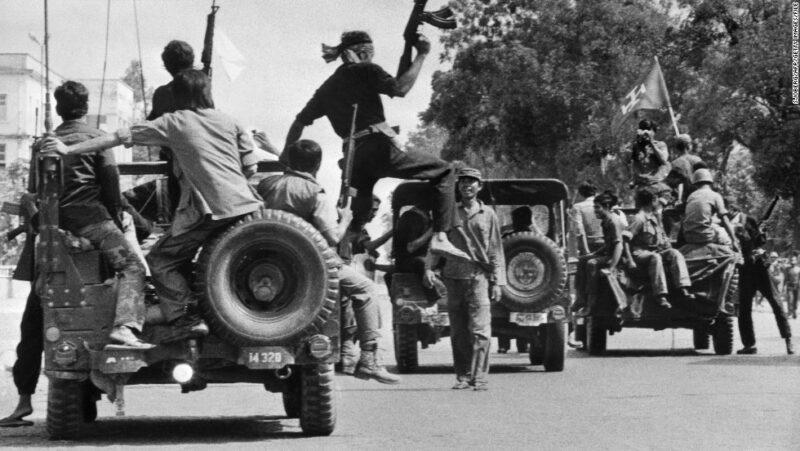
Photos: Cambodia's bloody pastCambodia's bloody past – Khmer Rouge guerilla soldiers wearing black uniforms drive into Phnom Penh in April 1975, as Cambodia falls under the control of the Khmer Rouge.Hide Caption 7 of 16
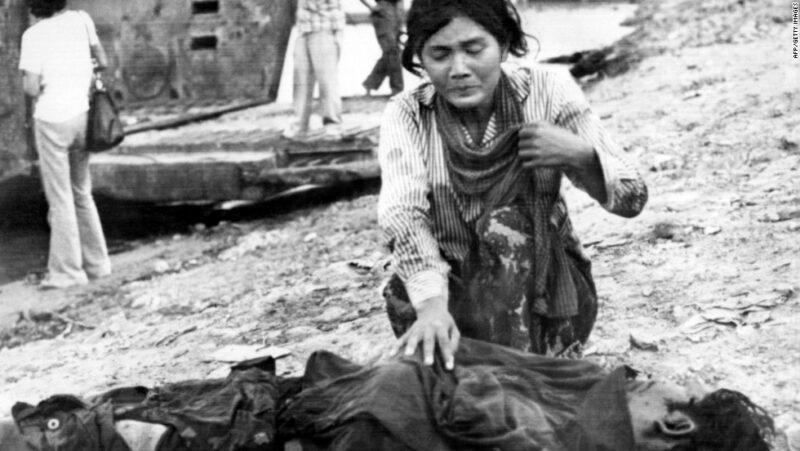
Photos: Cambodia's bloody pastCambodia's bloody past – A woman cries next to a dead body in April 1975 in Phnom Penh, after the Khmer Rouge enter the Cambodian capital and establish the government of Democratic Kampuchea (DK).Hide Caption 8 of 16
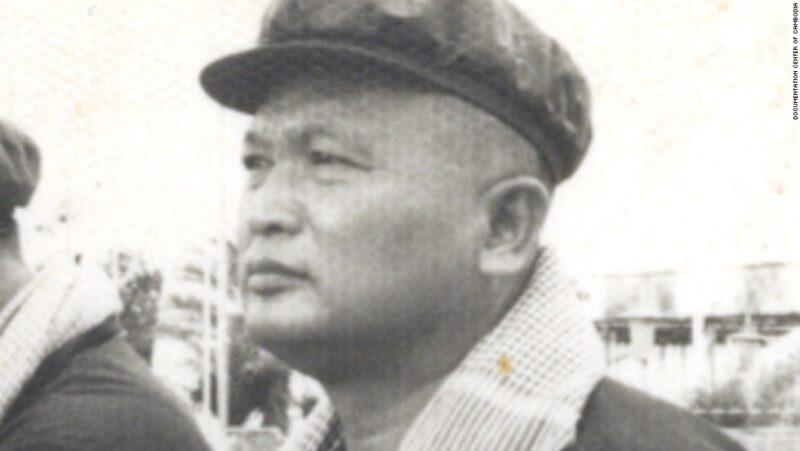
Photos: Cambodia's bloody pastCambodia's bloody past – Historical, undated photo of Nuon Chea. He held a number of positions during the regime’s rule, including a short stint as acting prime minister.Hide Caption 9 of 16
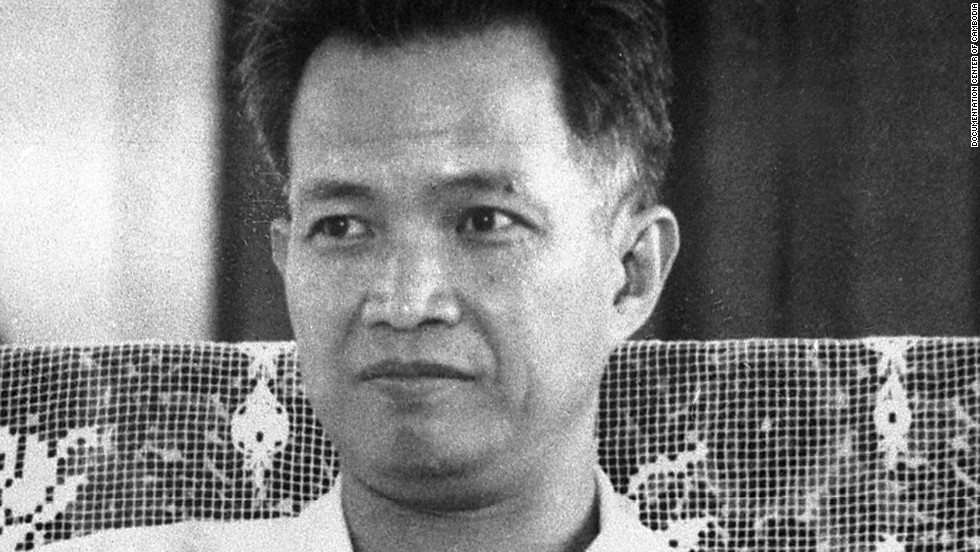
Photos: Cambodia's bloody pastCambodia's bloody past – Historical, undated photo of Khieu Samphan. During his trial, Khieu Samphan expressed remorse, claiming he was unaware of the full extent of the atrocities. He became the public face of the Khmer Rouge as it sought international credibility after its fall.Hide Caption 10 of 16
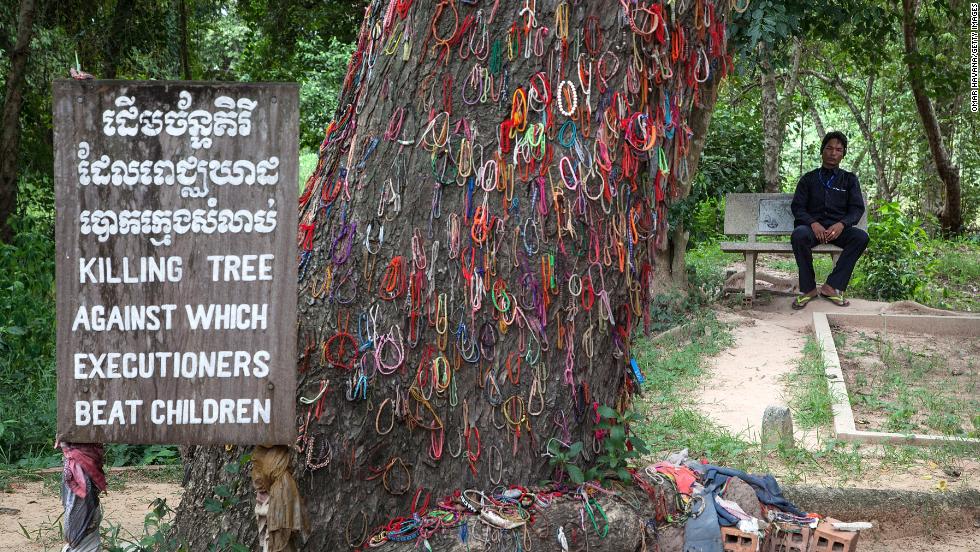
Photos: Cambodia's bloody pastCambodia's bloody past – A Cambodian man sits in Choeung Ek Killing Fields near a tree that was used to beat children to death during the Khmer Rouge regime on August 6, 2014 in Phnom Penh, Cambodia.Hide Caption 11 of 16
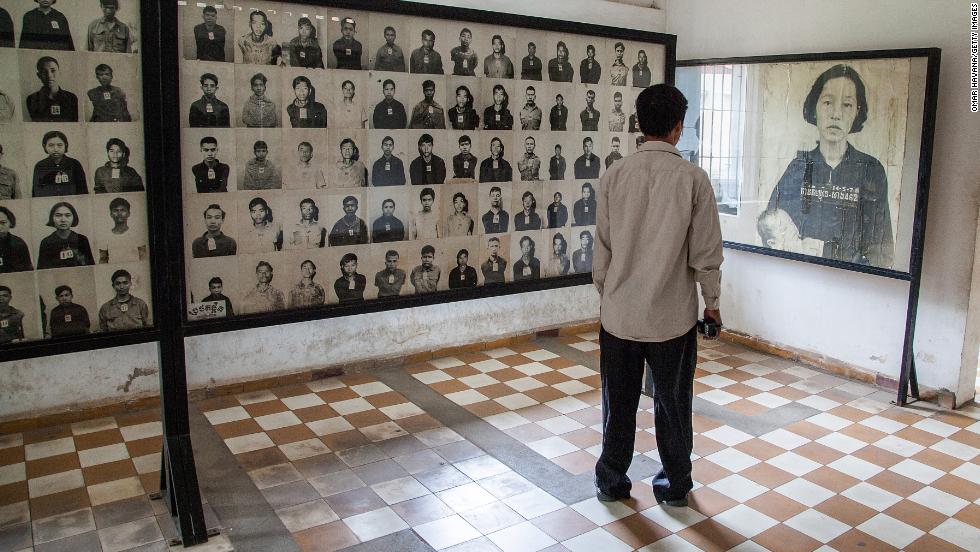
Photos: Cambodia's bloody pastCambodia's bloody past – A Cambodian man stands by a wall of photographs of prisoners of the Khmer Rouge regime in one of the rooms of Tuol Sleng prison, also known as S-21, on August 6 in Phnom Penh.Hide Caption 12 of 16
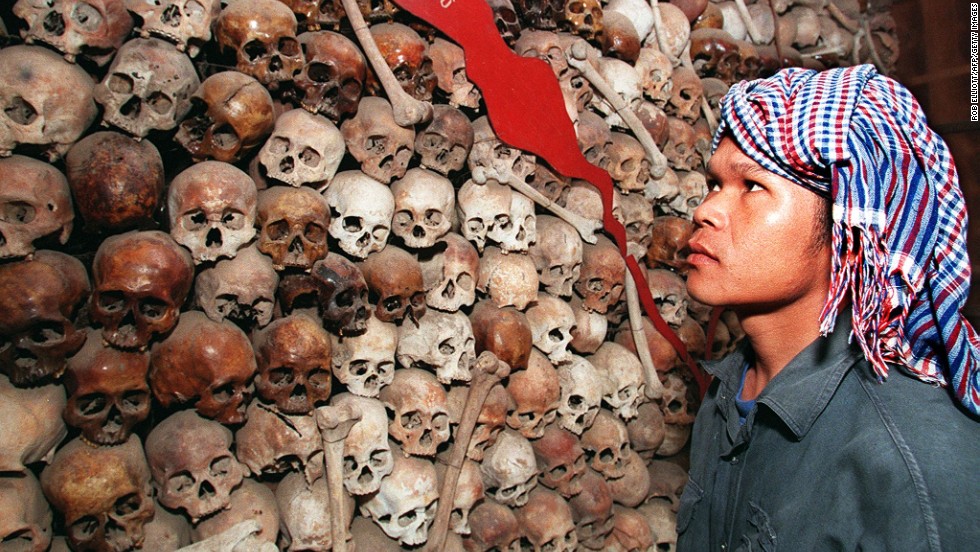
Photos: Cambodia's bloody pastCambodia's bloody past – Cambodian citizen Sam Vishna looks at a collection of skulls that make up a map of Cambodia at Tuol Sleng Prison Museum in Phnom Penh in 1998.Hide Caption 13 of 16
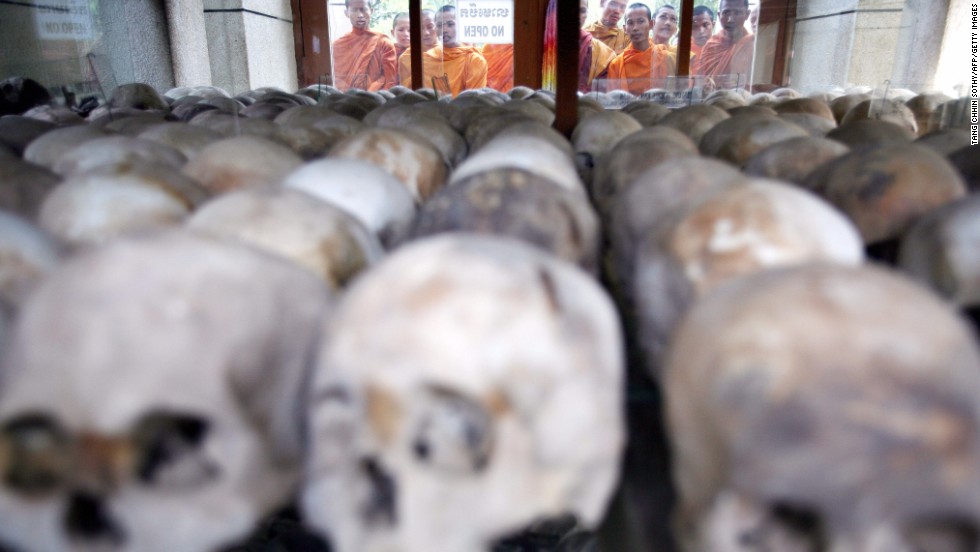
Photos: Cambodia's bloody pastCambodia's bloody past – Cambodian Buddhist monks bless victims’ skulls at the Choeung Ek Killing Fields memorial in Phnom Penh on April 17, 2008. Hide Caption 14 of 16
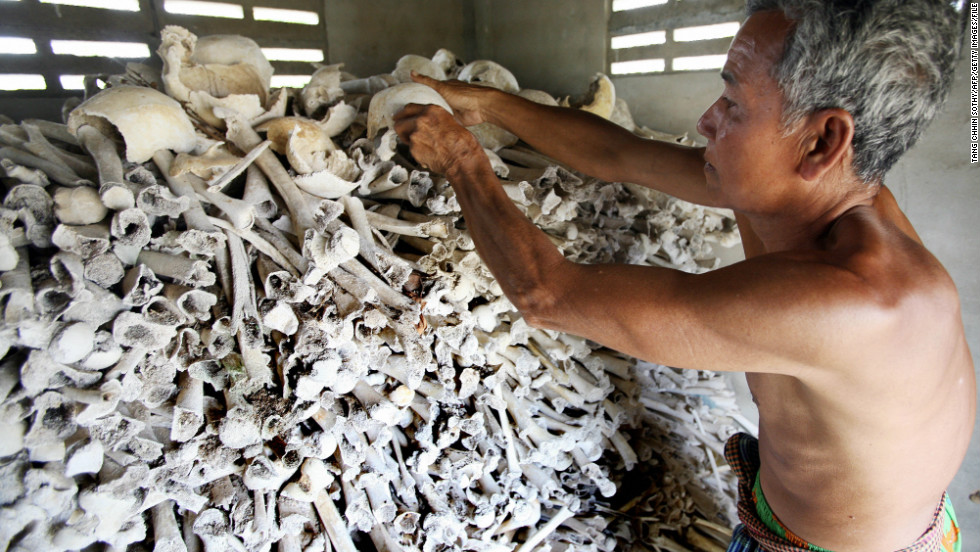
Photos: Cambodia's bloody pastCambodia's bloody past – Cambodian Sao Phen prepares skulls and bones of victims of the Khmer Rouge inside a stupa in Kandal province in 2009. Hide Caption 15 of 16
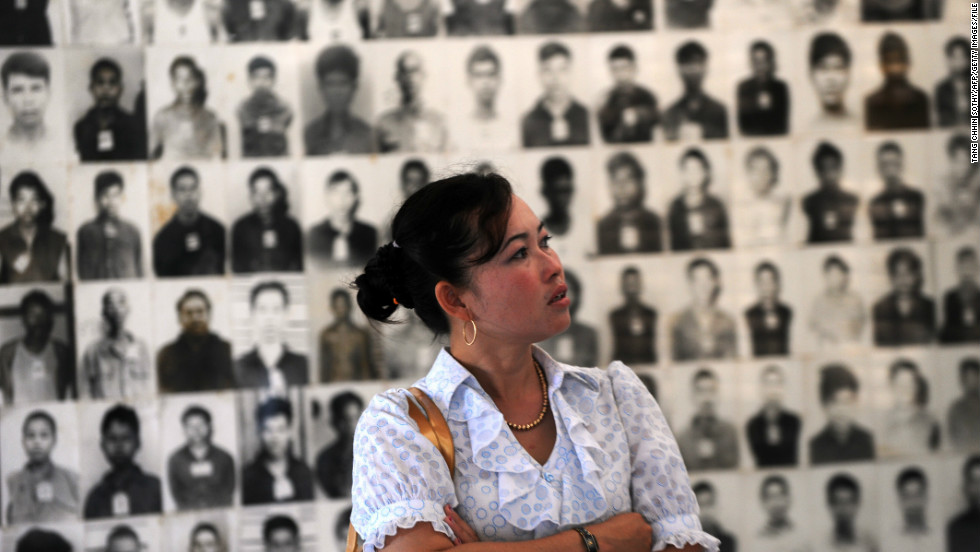
Photos: Cambodia's bloody pastCambodia's bloody past – A Cambodian woman looks at portraits of victims of the Khmer Rouge at the Tuol Sleng genocide museum in Phnom Penh on November 17, 2011.Hide Caption 16 of 16
















The silence was also due to the fact that Cambodians, in Seng’s words, “lacked the vocabulary” of therapy and healing to process a crime of the magnitude of the one perpetrated against their society.The Khmer Rouge’s attempts to reboot society at “Year Zero” had involved a concentrated effort to exterminate the country’s educated classes — doctors, lawyers, accountants, engineers, merchants and clergy.
Nearly two generations of young Cambodian men grew up learning little more than how to kill
“Nearly two generations of young Cambodian men grew up learning little more than how to kill,” said Etcheson. “When it was finally time to rebuild, there were effectively no bootstraps with which the country could pull itself up again.”Even today, said Uk, young Cambodians are not taught about the genocide in high school. In an impoverished country — one of Asia’s poorest, albeit with 7% predicted economic growth this year — most young people seemed to be focused on getting ahead than looking back, she said. Some were even skeptical that the Khmer Rouge’s crimes — the systematic butchery of the “killing fields” — had really occurred, she added.
Cambodia’s ‘Nuremberg’
The space for discussing, redressing and healing from the genocide only began to open up in the past decade with the establishment of the Khmer Rouge Tribunal, said Seng.Founded in 2006, the Extraordinary Chambers in the Courts of Cambodia (ECCC) is a “hybrid” tribunal using both Cambodian and international judges and staff to investigate the Khmer Rouge’s crimes against humanity and bring leading regime figures to justice.Intended as a southeast Asian equivalent of the Nuremberg trials, the tribunal, which has cost $232 million so far, initially enjoyed broad support.”We had great hope for this process,” said Seng. “The presence of the international community raised the comfort level of the population to speak about the Khmer Rouge crimes.”But the pace of proceedings has seemed glacial, given the advancing years of the suspected war criminals, two of whom have died while facing trial. Another was ruled mentally unfit to stand trial. (The Khmer Rouge’s top leader, Pol Pot, died in 1998, having never faced charges.)This, coupled with persistent accusations of political interference from the Cambodian government, has soured attitudes towards the court.Seng, who once appeared as a civil party in proceedings, today regards it as a “sham.” For many victims, it is “too little, too late.”OPINION: An ongoing struggle for justice after the Khmer Rouge
Three verdicts
In the first case heard, Kaing Guek Eav, also known as Comrade Duch — commandant of the notorious Tuol Sleng prison where more than 14,000 people were killed — received a life sentence for war crimes, crimes against humanity, murder and torture.The court’s only other verdicts, delivered in August last year, sentenced Non Chea, the regime’s “Brother Number Two,” and Khieu Samphan, “Brother Number Four,” to life. Both men have appealed their convictions.
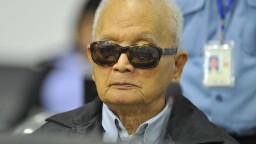
Nuon Chea, “Brother Number Two.”In a separate case, the pair are on trial on additional charges of crimes against humanity and genocide. Evidence is expected to continue being heard into 2016, ECCC spokesman Lars Olsen said. Two further, and highly controversial cases, known as 003 and 004, are also currently under investigation. Three people were charged last month in relation to those cases: former Khmer Rouge navy commander Meas Muth; Im Chaem, a former district commander accused of leading a labor camp; and Ao An, a former deputy accused of overseeing massacres at detention centers. Two other suspects are being investigated.Olsen said no further cases would be pursued after 003 and 004.
‘Imperfect vessel’
Prime Minister Hun Sen, Cambodia’s strongman leader for decades, has long been a vocal opponent of 003 and 004, claiming that pursuing the cases could push the country towards civil war.Hun Sen himself is a former Khmer Rouge battalion commander, who defected to the Vietnamese side; his perceived political interference is viewed by critics like Seng as an attempt to shield political allies from the tribunal.
In many villages, people have been living side by side with the executioners for decades
Others are more forgiving of the tribunal’s shortcomings. Etcheson, a former investigator for the tribunal, has described it as an “imperfect vessel” for delivering justice, but says Cambodia’s leaders must strike a balance between two imperatives: delivering justice for victims, and completing the reintegration of former Khmer Rouge into society.He said the most important aspects of the tribunal’s work are those that take place outside the courtroom — triggering changes in Cambodian society.”In that respect, the proceedings … may be shaping up to be more successful than anyone could have hoped,” he added.
‘Genocide memoirs’
Undoubtedly, Cambodians today have overcome the fear of talking about the genocide — to the extent that even the perpetrators feel emboldened to say their piece.Krisna Uk said the country has seen a wave of Khmer Rouge memoirs, written by former cadres wanting to argue their case before they die.”There’s a lot of people who want to tell the world they’ve been fooled by a grand idea of a revolution which went bad,” she said.
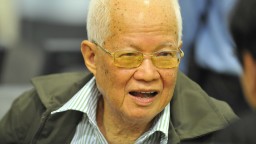
Khieu Samphan, “Brother Number Four.”Khieu Samphan, “Brother Number Four,” published one such effort ahead of his trial, while Sikoeun Suong, a Sorbonne-educated former diplomat for the Khmer Rouge regime, published his “Journey of a Khmer Rouge Intellectual” in French in 2013.He told an interviewer from France’s Le Monde last year that he believed that Khmer Rouge dictator Pol Pot’s prescriptions for Cambodia were sound.”I remain convinced that the Marxist analysis made by Pol Pot of the socioeconomic situation of Cambodia, a poor and sparsely populated country, was correct,” he said.
Bittersweet reunion
For survivors, these self-serving justifications for crimes gone unpunished must be hard to take. But for a few of them, at least, Cambodia’s opening up about the genocide has finally brought about the prospect of some healing, however bittersweet.
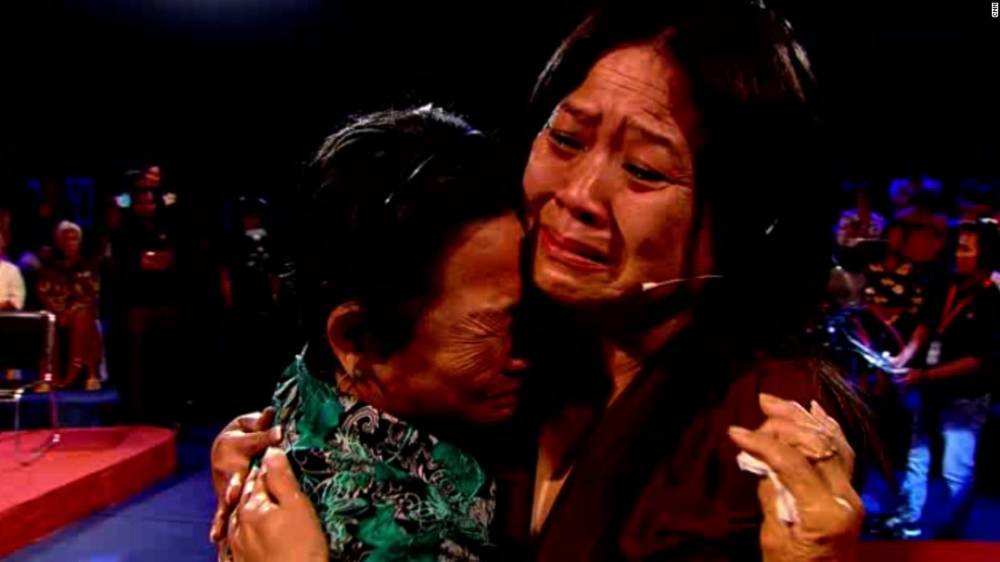
Ly Sivhong is reunited with her mother, decades after she believed she had been killed.On the stage of the “It’s Not a Dream” studio, as Ly hugs her long-lost sister, footage of an even older woman is projected on a screen.”Do you know the person in the video?” the show’s host asks.”Yes,” Ly says. “She is my mother.”Moments later, Te Souymoy, 77, is brought up on stage. “Where have you two been?” Te asks. “I always worried about you two.””I thought you died,” Ly says.
The three women cry and embrace.”It is very miserable for all of us,” the old woman says.
Source: edition.cnn.com

